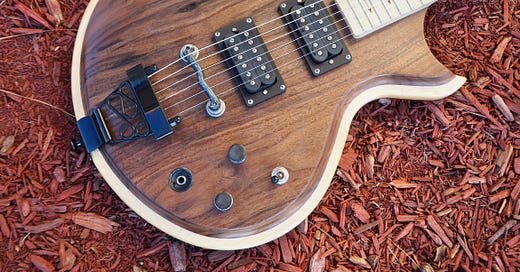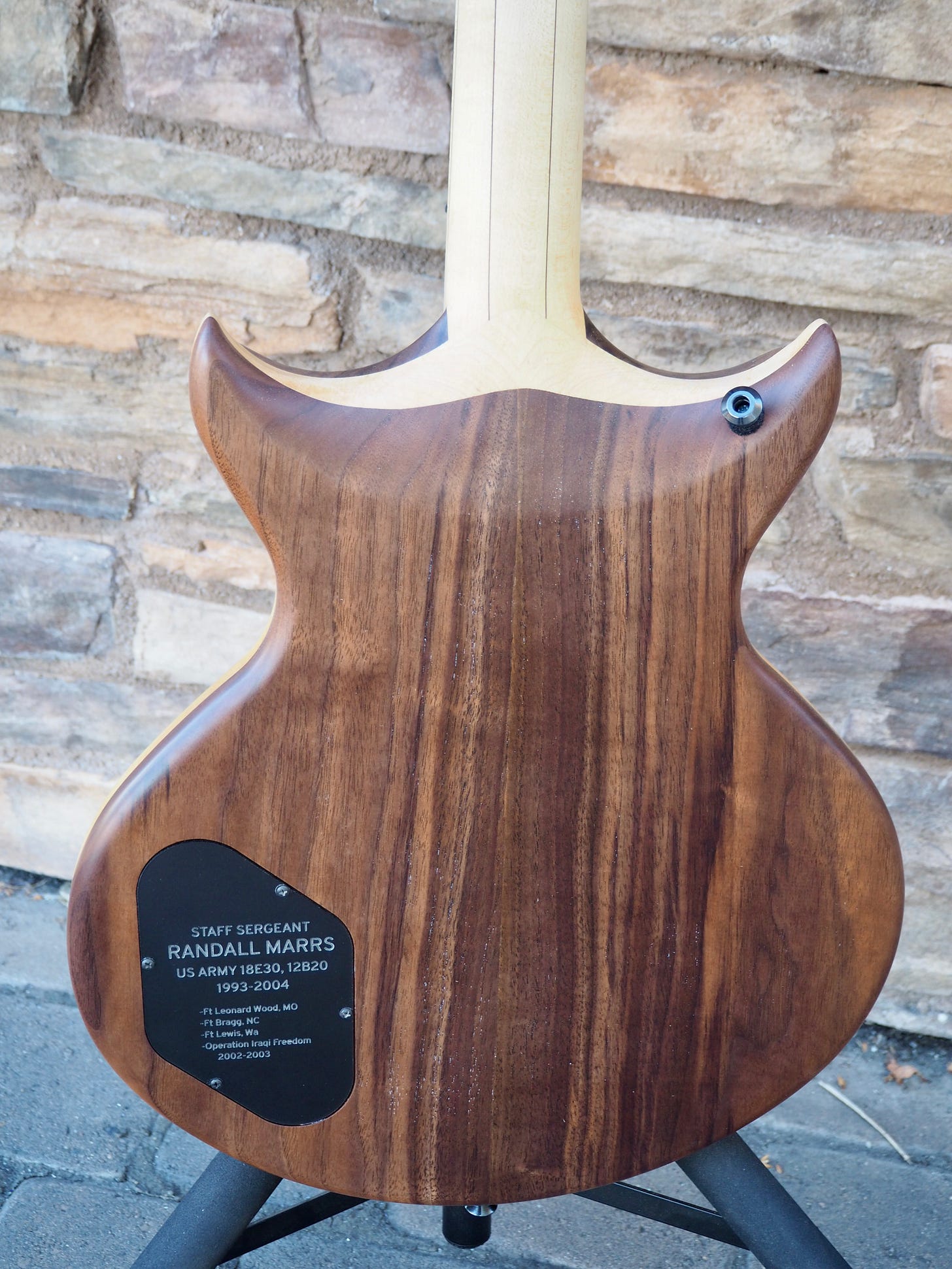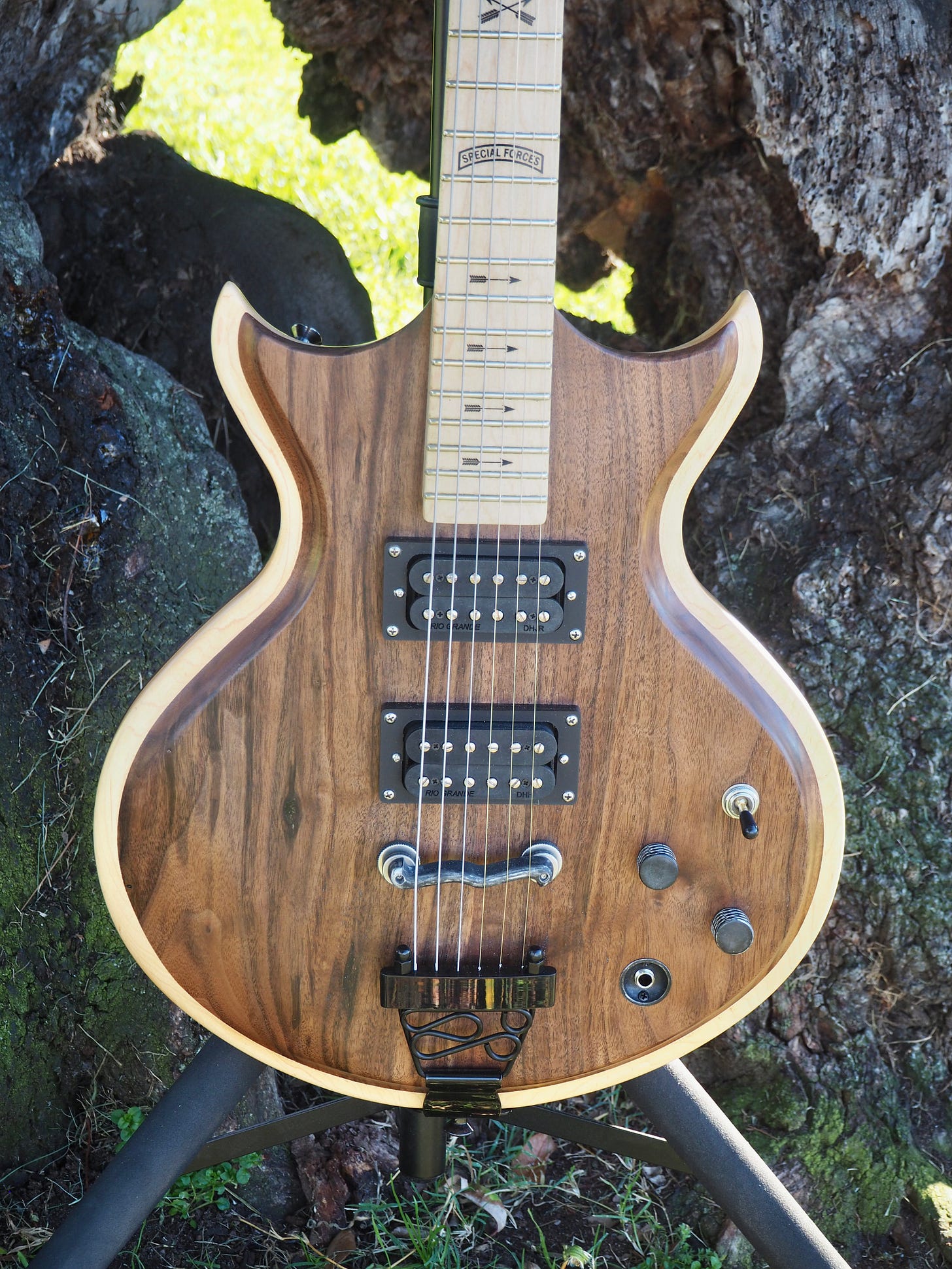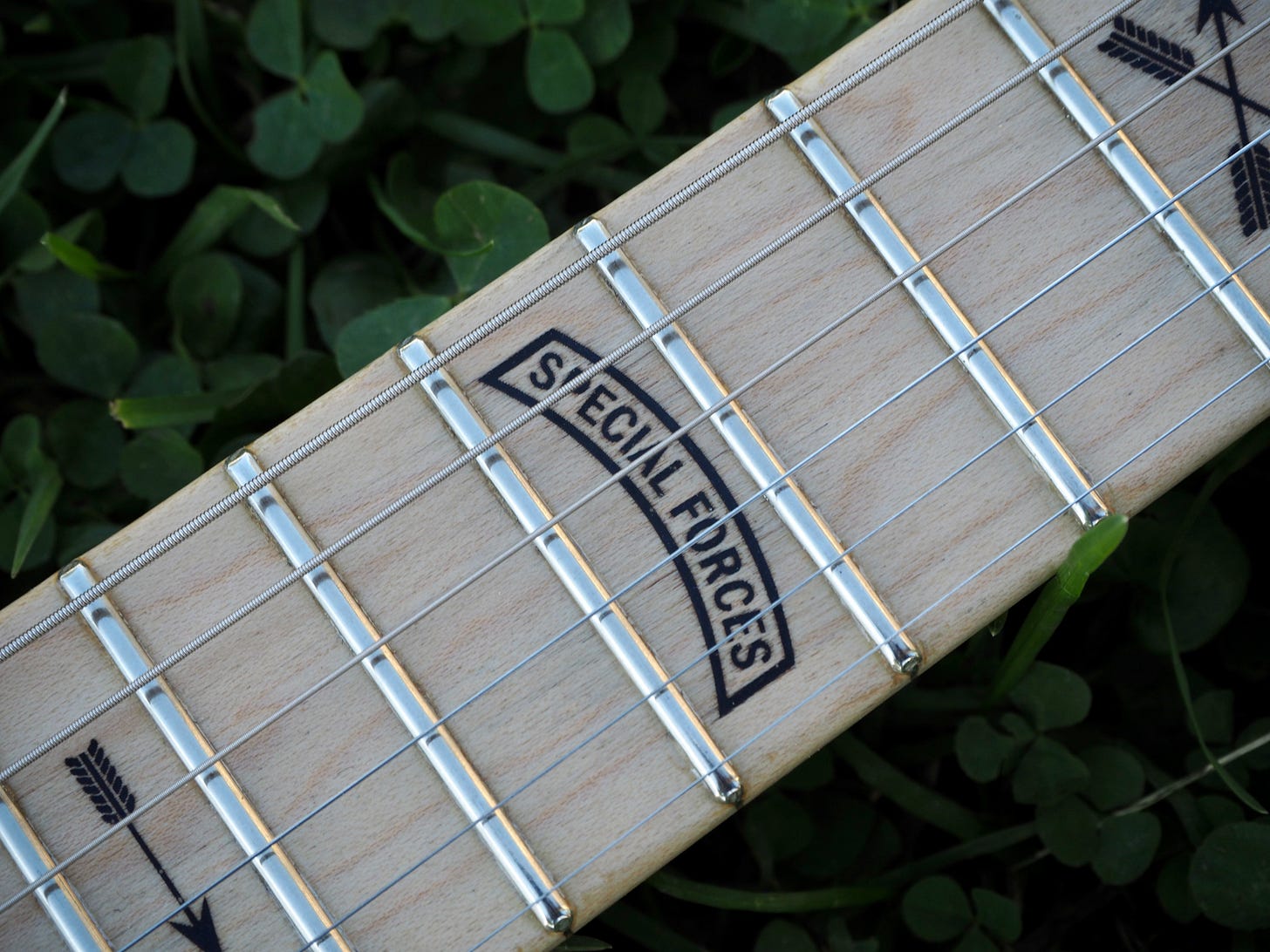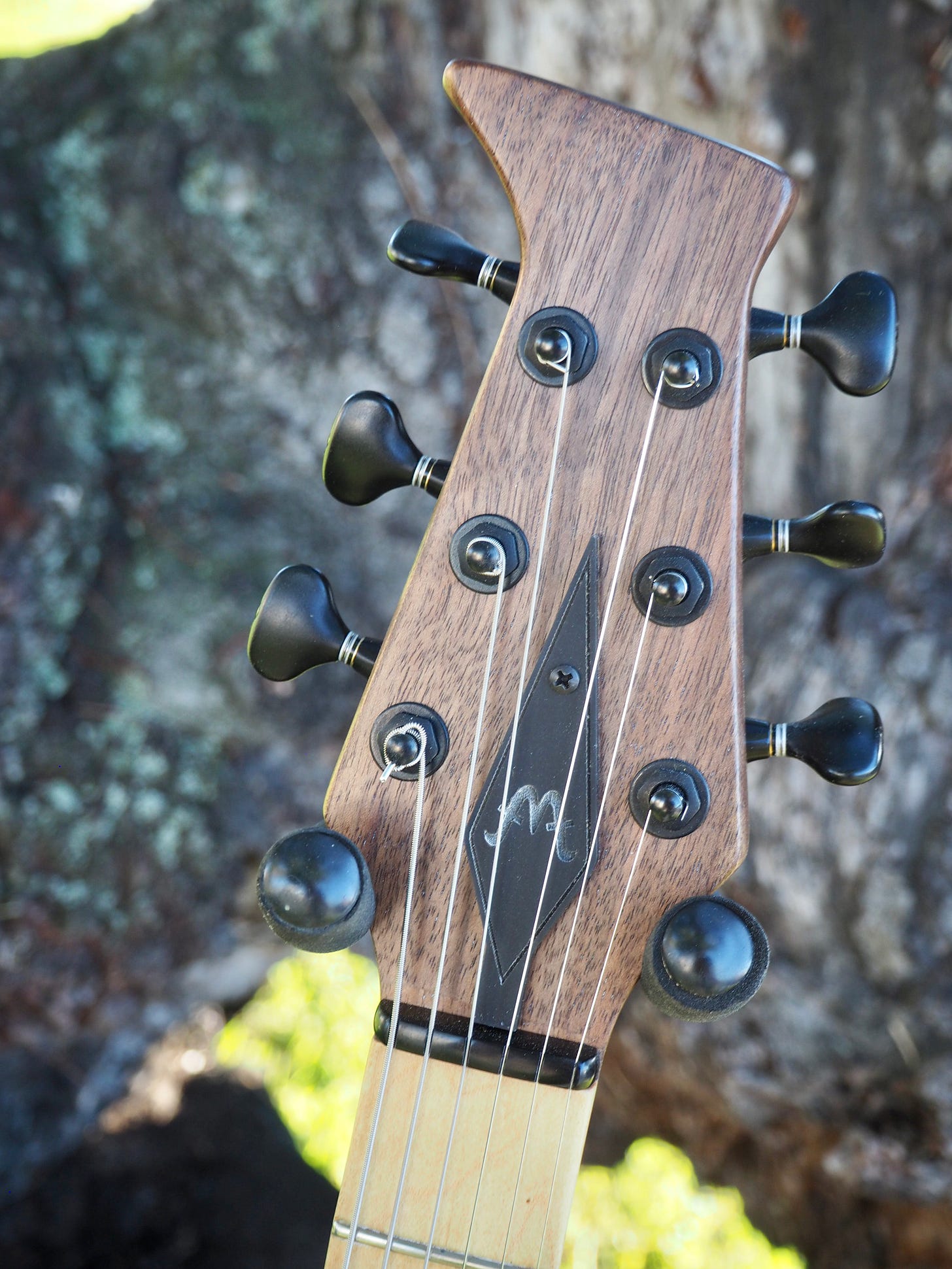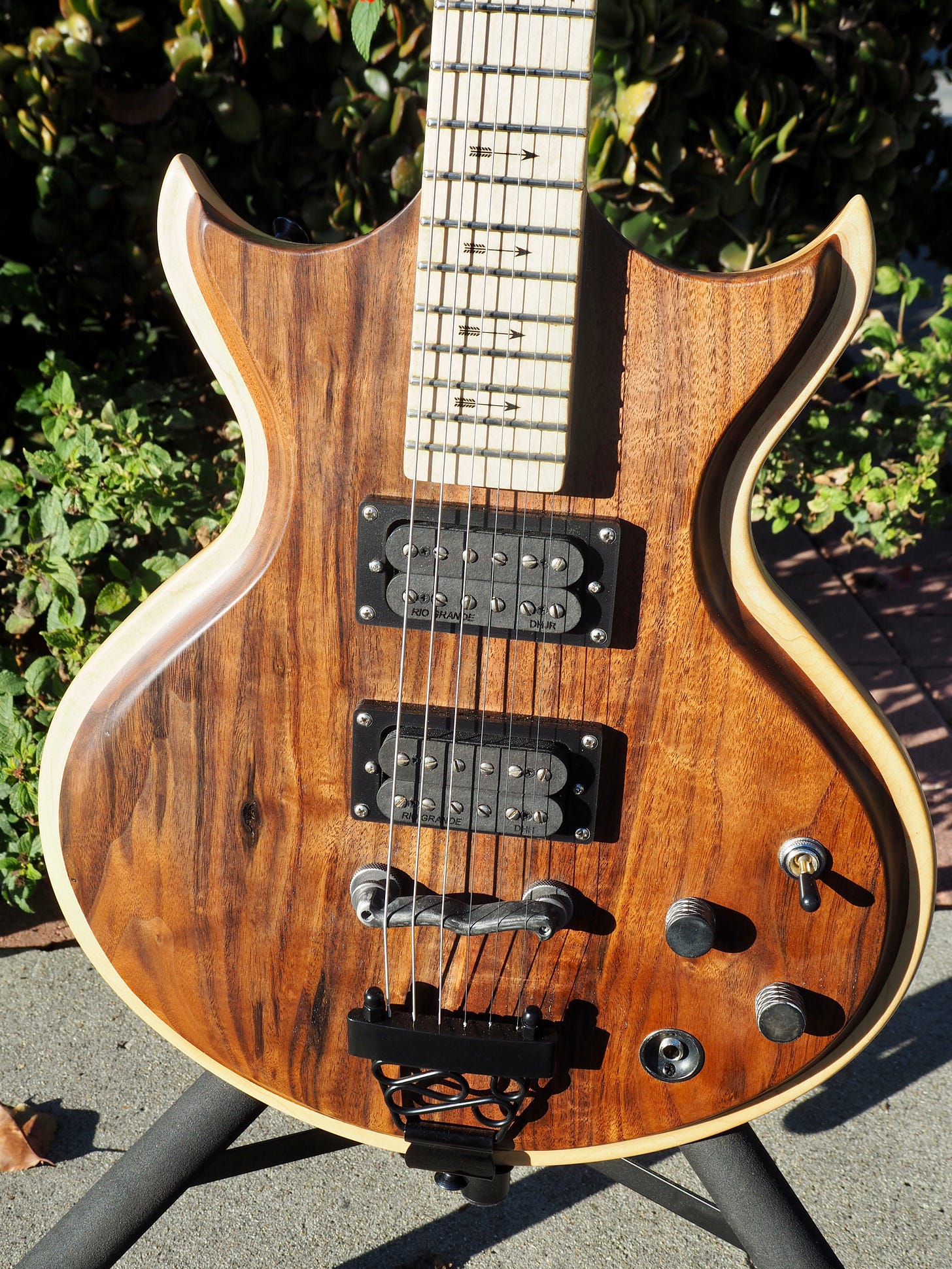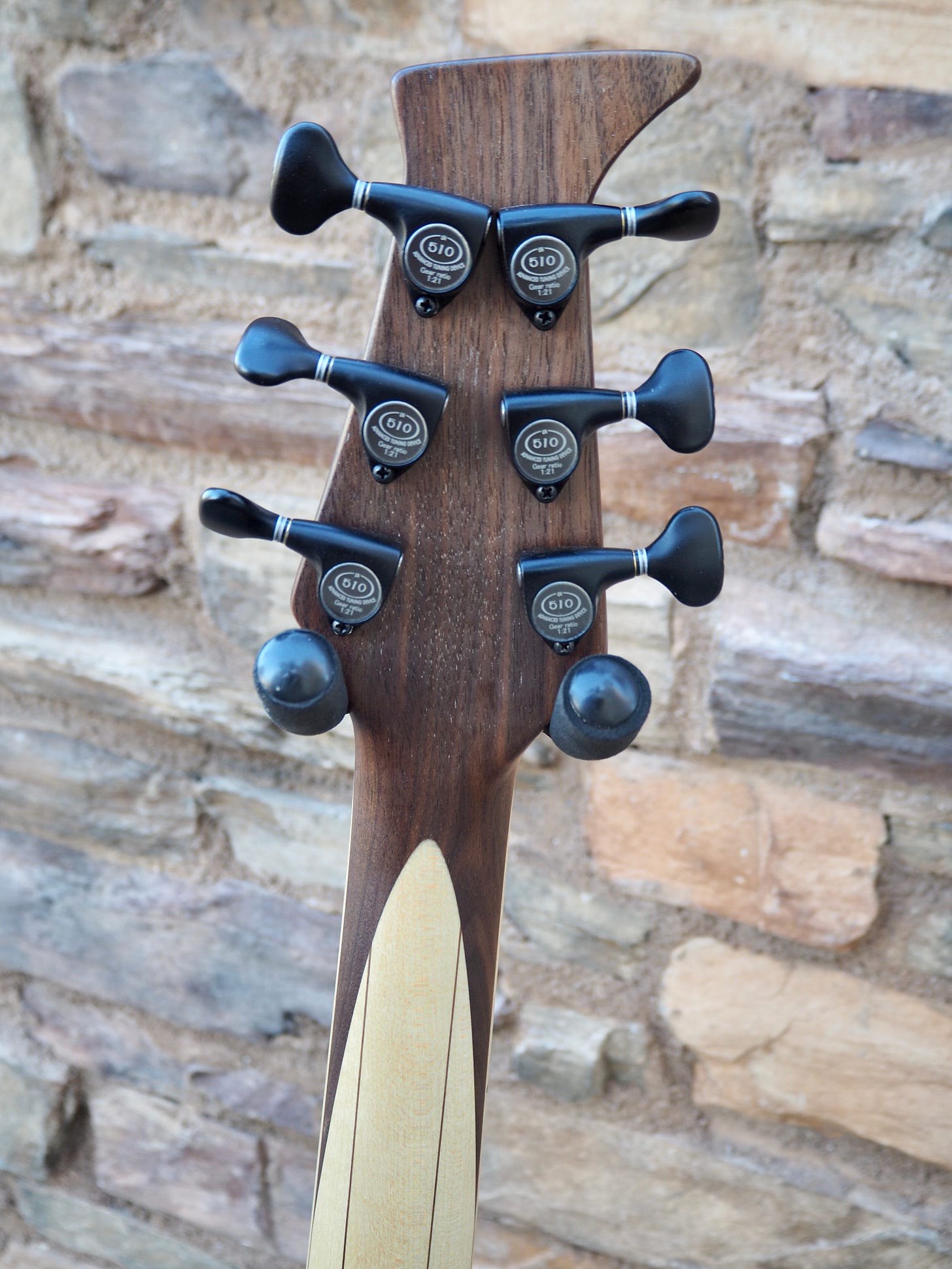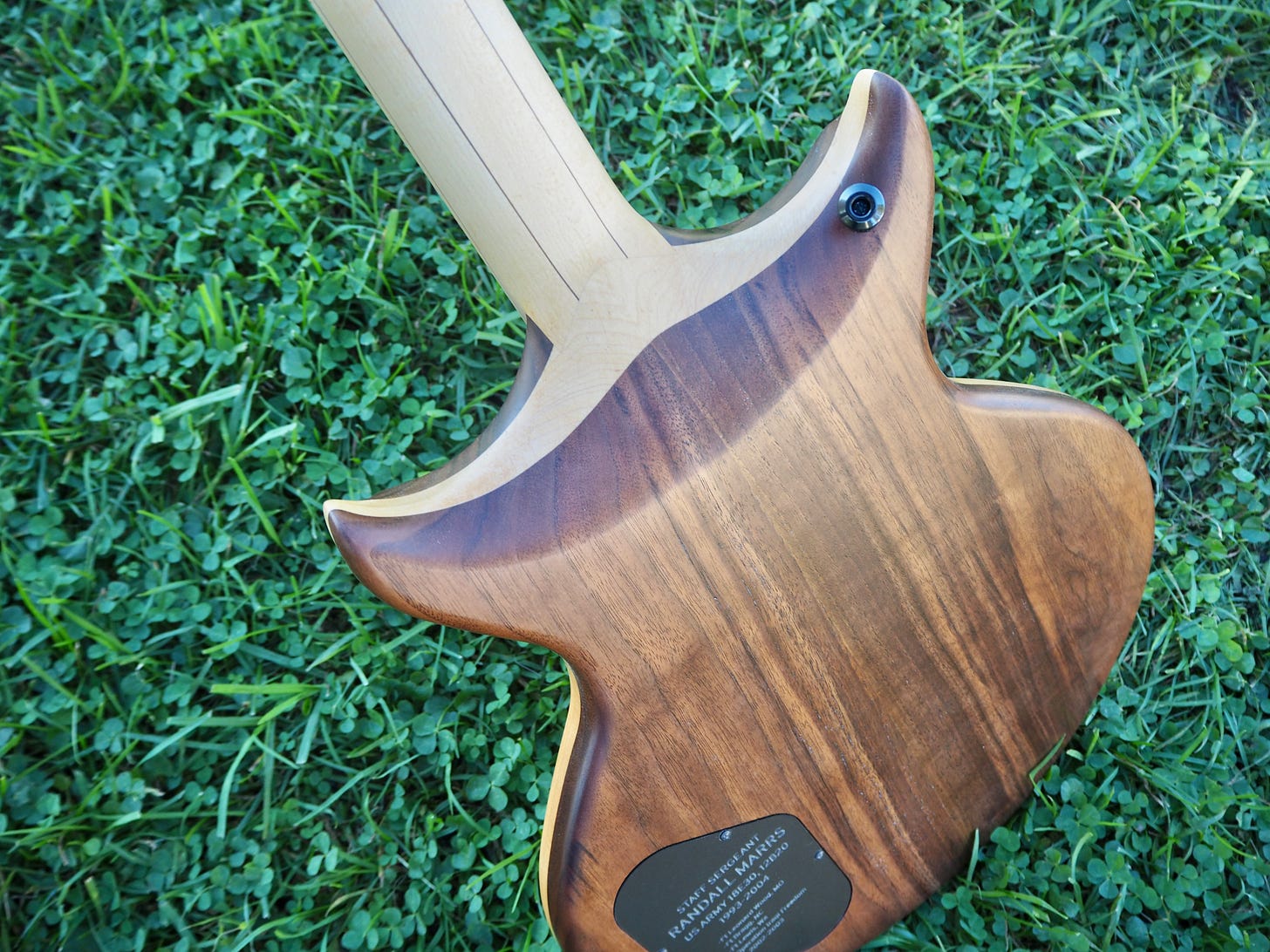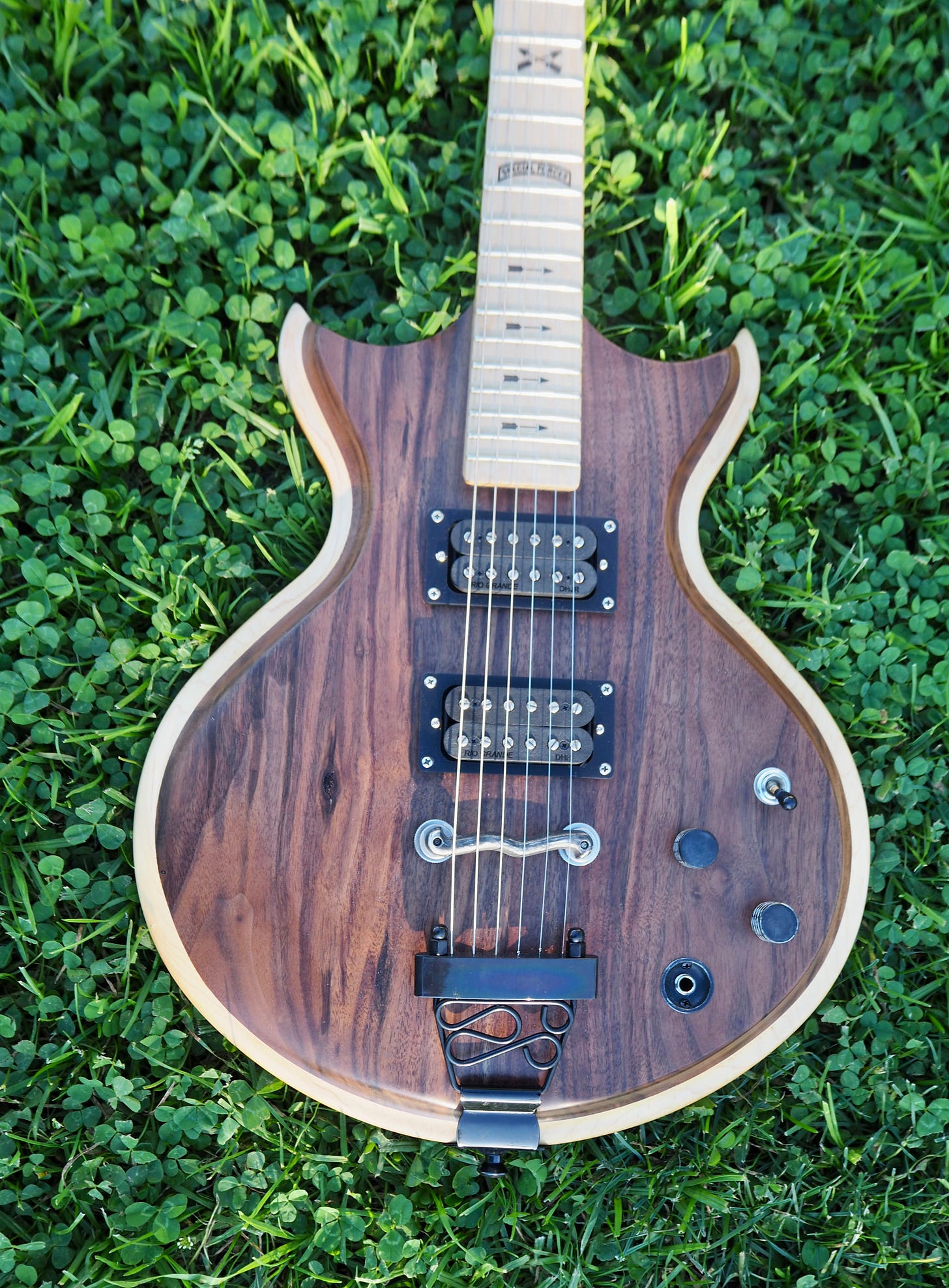I recently completed this walnut and maple Ranchita for my cousin Randall. This instrument pay tribute to his time in the US Army.
He wanted the build to pay tribute to the M1 Garand. This weapon was the service rifle of the US Army in World War II and Korea. Much of what made walnut an ideal choice for the Springfield Armory is true for guitar makers today. Its a beautiful, strong, and stable domestic timber. I got some particularly nice pieces that I used for the front and back of the body and for the headstock.
We chose to use maple as a contrasting timber for the middle of the “hippie sandwich” body. With the German carve on the top of the body, the maple forms a crisp outline. Its also the timer used for the neck and fingerboard. I used walnut veneer strips under the fingerboard, and between the neck laminations. The entire piece is finished in satin oil-based polyurethane for a smooth feel.
The fingerboard features emblems of the Army special forces badge and crest. The crossed arrows have been a US army symbol dating back to Indian scout units in the nineteenth century, and became associated with US/Canadian special service units in WWII. The symbol can be found on the Special Forces Crest above a banner that reads "DE OPPRESSO LIBER" which is translated from Latin as "To Free the Oppressed."
Black hardware matches the finish found on the M1. The tuners are satin black Gotoh 510s. The knobs, jack plate, and bridge were all machined in California, and were darkened using gunblack. The rod and cavity cover are matte black acrylic, cut in house. The back plate is proudly adorned with Randall’s service record, and the arrowhead truss rod cover displays my makers mark.
Randall chose Rio Grande Dirty Harry pickups. These are high output (18k+) humbuckers with pole pieces in each position. Using the six position “freeway switch” Randall can split the humbucker and get a strat sized p90 tone from one of the coils. I find the 6-way switch to be an elegant way to implement coil tapping without complicating the control layout, as all the tones are accessible from a single intuitive control.
The body meets the bridge at the 15th fret. This is fine for many players, who don’t venture into the higher registers much. Mike Squires says there isn’t any money up there anyway. The other side of the trade is a smaller instrument that saves a little weight, and reduces the reach for cowboy chords. On custom Motander builds this is a player preference, as is the nut width and neck thickness.
I was honored to get to work on this special build for my cousin. I’m also proud to pay tribute to the service people who carried the M1 into battle against the forces of facism in WWII, and to all who have sacrificed for my country since. It also fucking Rips (see the fully gallery and a couple video clips here)!
Hope you enjoy it Randall!
-Justin Motander Jones

